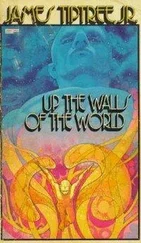“This sounds like a cult.”
“What?”
“What you're telling me. This sounds like the introduction to a cult. It's good versus evil, us versus them. It's not that simple. It's not like the richest people in the world got together and concocted this plan to control the entire population by removing Thucydides from the curriculum of every high public high school in America.”
“Look, the A-R-E is not a cult. The A-R-E is about more than that. Look, what I'm saying is this: To Keens, the paradigm of the slave and master was outdated, bunk. The master, one with an orientation of domination, will be capable of justifying anything because this person sees everyone else as a slave, a pawn. This is a person without integrity, a person of caprice and malice. The slave, one with an orientation of submission, is equally repulsive. The slave capitulates to irrational power structures, not out of fear, but under the impression that such cowardice is moral, even virtuous. He claims these virtues to be founded upon integrity, but there is no integrity in slavery, just as there is no integrity for the master for whom ethics is a practice in rationalizing whim and fancy.
“The two are obviously dialectically opposed. Moreover, neither is desirable. Keens felt that this could not be internalized; one cannot be either master or slave without accepting an absurd form of dualism. So, to him, the A-R-E was an attempt to find a synthesis between the two that would consequently abolish the two not only on a societal level, but on a personal level: the abandonment of egomania on the one hand, the abandonment of irrational deference on the other. But it was more than that, too. It's difficult to explain, but here's the long and the short of it:
“Every individual is an amalgam of experiences. These experiences create the individual's personality and preferences, the way in which they interpret the world in which they live in, the meaning they predicate upon symbols and signifiers. Now, a lot of people have personalities that are founded upon archetypes within any given community. John Wayne's typical character in his movies, for example, is an archetype, which, mind you, is more significant than a personage. Many American men have come to identify him as an archetype, perhaps even the paragon, of masculinity. They consequently strive to replicate his behavior and mannerisms. But this desire is not entirely genuine. They feel as though society wants them to do this. It is the desire to be the other that the other desires, but it is simply not a possibility. As a result, any individual who follows this road will be forever in a state of becoming, even though there is no possible way to satisfy this desire. On the one hand, it is simply impossible — you can’t be what you are not. Furthermore, no individual fully wishes to be like any one archetype. Each individual wants to emulate several archetypes, and these archetypes are often at odds with one another.
“Eidolonism is the attempt to remove the impulse to become one or several archetypes. Most instantly recognize the contradiction in the argument — if one is an amalgam of experiences, then their experience of wishing to be an archetype is a necessary part of their personality. This is true, Keens would concede, but it misses the greater wisdom of an imperfect, perhaps only nascent, philosophical movement. If the various archetypes that one seeks to emulate are in contradiction, then one cannot ever exist without some form of inner turmoil that leaves the personality in a constant state of agitation. How do you extricate the individual from this dilemma? Simple: strive to remove the archetypes. That's the goal. It's virtually impossible to achieve it, I know, the A-R-E is supposed to be about realizing the beauty of a human in his or her individuality — this includes a person's past, present, and future, as well as everything that is either corporeal or spiritual, but it does not include the numerous archetypes imposed upon those who live in this or that society, nor does it include any meaning cast upon a symbol that the individual feels is dubious or inauthentic.
“But to fully appreciate oneself, one needs to appreciate others. One needs to feel comfortable, to have a context within a community of which they feel unencumbered. Furthermore, one needs to appreciate the greats from the past — not only because they are brilliant, but because that's how one comes to really understand the individual self in a historical manner. Then again, Keens wanted people to abandon their prejudice, which, in a sense, meant that they had to abandon certain elements of their history. Prejudice, after all, is created by history.”
“So one must realize the beauty of history by abandoning it?”
“No…I mean, yes. But not how you put it. One must recognize their place in history, but one cannot dwell upon the history. If one is living in the past, then one is stuck in a state of becoming. The goal is to be. And one can only really be when they see themselves within the context of their surroundings.
“Have you ever heard of Ewen Cameron?”
“No.”
“He was a psychiatrist. He worked up in Montreal during the fifties, and the CIA funded a lot of his research — you know, MKUltra shit. You've heard of that?” Nod. “Okay. Well, he realized that a patient's sense of self could essentially be eliminated by electroshock therapy — which destroys short-term memory — and sentences of total isolation. In other words, a mind that is forced to retreat into itself will inevitably collapse. This seems to buttress what Hegel posited: If one is liberated from all of the structures of society, then that individual ceases to have an identity. Identity is sufficient for a community.
“Keens would say that the greatest artists are those who are humans being. Get it? And that's the spirit of improvisation, and real art is nothing but improvisation. 'If you understand 'Trane,' he once told me, 'not just the notes he's hitting, or the theory behind the changes, but the force, then you will perceive his eidolon. The eidolon reveals itself in art.' Spontaneous creation is an instance of autonomy, perhaps humanity's only means of true autonomy — unless one claims that creation is just another example of an individual existing as an agent of the social forces around him, which is certainly possible, but this entails the complete absence of free will, which is something that no human can accept once they step out of the classroom. Regardless, that's what Keens wanted to do: He wanted to provide the venue for people to embrace that force within themselves, not just when it was directed at a canvas or through an instrument or onto a page, but in life, and he wanted there to be a community that shared this ethos in order to allow for a new understanding of the world in which we currently live.”
“The party just seemed like a bunch of people having fun.”
“Fun is kitsch,” he says stolidly. “So, too, was the spiritual awakening of the majority of the hippies in the sixties.” He pauses. “This is similar, only it is substantive. There are exceptions, of course.”
“Mongo?”
“Onion Man?” He laughs. “No, Onion Man is on his own page.” He lights another cigarette. “You said you know Winchester, right?”
“Yeah. He was the one who—”
“Told you about the Astral Resurrection Entities. You should have realized that the title doesn't make any sense. Onion Man came up with it to fuck with Winchester.”
“Why?”
“He, Mongo, had recently seen some documentary on the Yanomamo. In the film, the ethnologist or anthropologist tries to figure out the genealogy of various members of the tribe. After a few weeks, he finally realizes that the whole village was fucking with him, and that none of the information he'd been given was accurate. Onion Man thought it'd be funny to do the same type of thing to Winchester.”
Читать дальше










